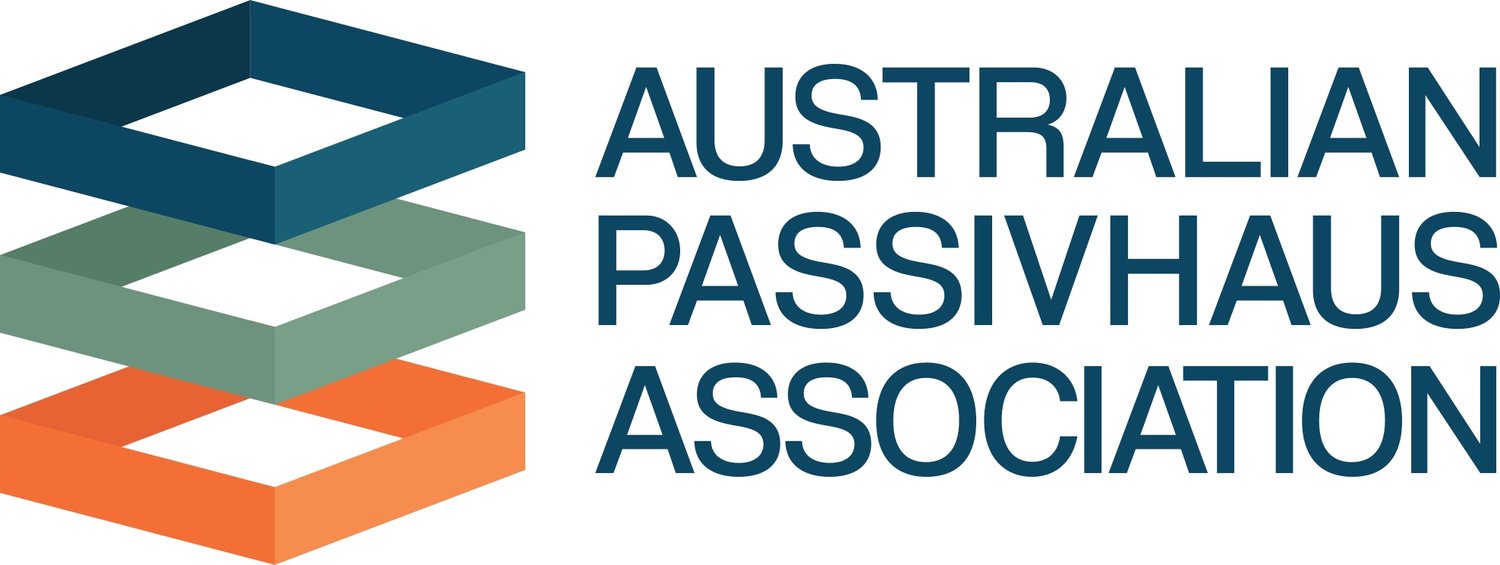SPPHC 2020 Wrap Up!
Thank you to all who joined us for the South Pacific Passive House Conference 2020 this October.
It's been a big year, and we are so grateful to our sponsors, delegates, and presenters for their patience and support while we migrated from an in-person to a virtual event. It would have been great to have hosted the event live as originally intended, though we were so pleased with the end result of our virtual platform. It was fantastic to see our keynotes, presenters, and delegates engage with each other on our live chat and networking portal.
Delegates can watch the presentations saved to the conference platform here until 30 November 2020.
Talina Edwards, award-winning Architect, Certified Passivhaus Designer, and APHA member recently attended (and presented at) the South Pacific Passive House Conference. Read on to find out more about Talina's experience at this fantastic event.
Wow! What a week of inspiring learning at the South Pacific Passive House Conference 2020! This was the 5th annual conference run by APHA in conjunction with PHINZ, and was one of the biggest and best so far. Although having to be re-scheduled to be a ‘virtual’ experience meant we missed the face-to-face benefits, it was still an extremely well-coordinated conference with excellent content and opportunity for connection via the online platform with fellow attendees/presenters. Congratulations to APHA’s Paul Wall, Rachael Alden, and board members for pulling it all together!
One happy attendee described it as #sustainabilitynirvana (That wasn’t me - Jeff Robinson shared his gratitude in the final ‘Happy Hour’ chats!) But I certainly was in my *happy place* soaking up new passivhaus insights, re-affirming knowledge, feeling proud of what my peers are achieving here in Australia, and being incredibly inspired by the success stories from overseas.
Dr. Wolfgang Feist, co-founder of Passivhaus opened the conference, and clearly spelt out the three reasons why we need passivhaus buildings (which was then echoed throughout the presentations):
Health of our Planet: Net-zero carbon buildings (easy to achieve with Passivhaus) - we must reduce carbon emissions now, and the construction industry has a responsibility to do so.
Occupant Health: the Passivhaus standard ensures optimum indoor environment quality - and when we spend over 90% of our time indoors (and are facing bushfire smoke and viruses transmitted via the air) this has never been more important for our health.
Occupant Comfort: a certified Passivhaus delivers on occupant comfort, maintaining optimal temperature and humidity, despite fluctuations outside.
Over 4 days, there were approximately 32 presentations (some running in parallel streams) in addition to multiple daily trade show talks too. (See the full program here). The overall vibe was very positive, with lots of examples of “how” we can build better buildings, by those who have been there.
Each day started with a panel session featuring a different topic, and these were fascinating insights learning from a broader perspective:
‘Meet the Architects’ hosted by Johanna Trickett & ‘Meet the Builders’ hosted by Clare Parry focused on the larger commercial passivhaus projects with very candid conversations with the professionals involved
‘Market Response to Quality in Construction’ hosted by Chris Nunn focused on the financial challenges that can be faced (& overcome) with mortgage brokers, banks, and insurances for passivhaus projects
'An Industry Perspective’ hosted by Clare Parry was eye-opening to understand how industry body representatives are advocating for Passivhaus (including representatives from Green Building Council, ASBEC & Property Council of Australia).
There was a balanced mix of presentations including theory and practice (and end results), including:
Architectural case studies with loads of gorgeous pictures to feel inspired & see what is possible (spoiler alert: they’re not all boring boxes)
Builders’ insights with what went wrong and where things can be improved with regards to air tightness, insulation and services, and other on-site learnings
Post-occupancy insights from owners/clients was very valuable to hear from those living in Passivhaus buildings about their experience (with no regrets about going down the passivhaus path)
Technical talks (with a lot of graphs for the non-engineers amongst us, but) with invaluable conclusions drawn from the data presented
Practical learnings about the whole process from many perspectives.
The highlights for me were our inspiring international speakers (thanks to Kate Nason for organising them!). It was encouraging to see how quickly they’ve gone from their first passivhaus projects to it being embraced at scale to hundreds (and thousands of projects) across the world!
Bronwyn Barry from NAPHN, USA:
Discussed Passivhaus on an Urban scale. Reminder to use PHPP as a design tool (not an audit later), medium-density housing easier to be passivhaus, don’t over-articulate the built-form, and that councils have supported education policies before going to incentive programs for developers.
Matheo Durfeld (BC Passive House) Canada:
Shared his pioneering Passivhaus story that started with the Olympic games in Whistler just ten years ago, and has now grown to a large scale CLT Passivhaus manufacturing plant which can’t keep up with demand!
Chris Higgins, City of Vancouver, Canada:
Generously shared the successes of Vancouver’s “Greenest City” policies, who are world-leaders in this regard. In 2014 they had their first passivhaus project, and today there are 4713 in for permits to be built. They set a clear destination and path, and communicated this with industry. They find, feed and follow the leaders. They build industry and government capacity with training. They are acknowledging the climate-emergency and taking large-scale action.
Sebastian Morena-Vacca, A2M Architects, Belgium:
Talked about refueling the architecture narrative with his “Permacity” manifesto, 5 points for future proof design of our cities: passivhaus, net zero energy, autonomous, carbon-neutral, and regen. He then shared inspiring commercial passivhaus projects he’s delivered all over the world that are living examples of his manifesto (including a project in Antarctica, describing it as “too easy”!). His creativity shone through with the stories, and his closing line was “DO IT”.
A few of the key takeaways that were reinforced a number of times throughout the conference:
“If you want to go fast go alone, if you want to go far, go together” Collaboration and having the right team with a shared goal are crucial to a successful project
Health and wellbeing (& future resilience) is so important - particularly as awareness about ‘fresh’ air has been heightened this year with polluted air, smoke, and the covid-19 pandemic - passivhaus is not just about net-zero carbon
ECI (Early Contractor Involvement) is key
The passivhaus community is very generous at sharing their knowledge and lessons learnt
Passivhaus should be the #newnormal, it is time to move away from BAU (Business as Usual)
Implementation of building-science (air-tightness, ventilation, thermal-bridges, insulated-glazing, etc.) is already slowly being introduced into the Australian building code - so why wouldn’t industry professionals want to jump on board earlier rather than later?
#BuildCapacity - awareness and education is the key to passivhaus becoming more widespread. “Subsidising education, not energy consumption” was a recurring theme from overseas success stories
Promote leaders in the community and celebrate successes as this leads to widespread awareness
Commercial Passivhaus projects are a ‘no-brainer’ - makes financial sense in terms of low running costs, in addition to the other benefits of health, comfort and resilience
The Residential market is still in the ‘early-adopter’ phase, but interest is growing, and price premiums should drop as uptake increases. However working with experienced passivhaus professionals means these premiums can be reduced by focusing on quality not quantity
The performance gap between code-compliant building and Certified Passivhaus is still not well understood in the broader industry, but there’s plenty of expertise and advocates to help start to close this gap.
Achieving net-zero-carbon is meaningless, unless you focus on a fabric-first approach. This ensures your building envelope is thermally efficient first to reduce operational energy, then powering with renewables.
Large scale/council/government success with Passivhaus uptake has not just focused on the ‘carrot’ or ‘the stick’, but the ‘tambourine’ approach whereby people WANT to be involved with teams that deliver Passivhaus because it feels good to do so!
Passivhaus is not the silver-bullet. We need to look beyond PH to regenerative design, also considering embodied energy, biophilia, water, waste, social sustainability, justice, ecology, biodiversity and more….
The launch by Andy Marlow of APHA’s new book by “Passivhaus in Australia: why these healthy, comfortable and resilient buildings should be our new norm” is also worth celebrating - as this book is all about sharing all the good stories happening here over the past few years.
There’s dozens of case-studies, as well as a really good overview of what Passivhaus is all about - download your free copy and share with your family, friends, clients, colleagues, consultants, contractors, councillors and more...
It is time that Australians learn to #expectmore from our buildings, and that we all deserve better. This book shows what is both desirable and achievable.
As the conference presentations were pre-recorded, it means that this content can be shared in the future, and it also meant that presenters and attendees could have lively discussions in the ‘chat box’, and answer questions throughout the presentations. This was an unexpected advantage to having the conference online.
Travelling to attend the conference in the past has been an annual highlight over the last few years for me, and since we’re all suffering 'Zoom-fatigue' I wanted to ensure I could be in the right head-space to fully immerse myself in the content. I booked into an (uncertified) passivhaus holiday-house not far from my home here in regional Victoria - I figured it was the next best thing and I feel very fortunate that I was able to do so! I’ve stayed/spent time in six different passivhaus projects, and I highly recommend experiencing what it feels like in real life (when everyone’s travel restrictions allow). Virtual passivhaus tours can definitely reach a wider audience, and the conference content was compelling, but all of this is trying to describe something that can’t necessarily be seen. The real benefits of a passivhaus are not visible - it is about how it feels to be in one - and I can tell you from experience that it feels really good!
Talina Edwards
Talina's green retreat, the perfect backdrop for SPPHC 2020
Talina's green retreat, the perfect backdrop for SPPHC 2020
Passivhaus In Australia
Why these healthy, comfortable and resilient buildings should be our new normal
The Passivhaus in Australia book was launched at the South Pacific Passive House Conference 2020
This book records how individual people and organisations have taken bold action, inspired by their commitment to a better world. They have pioneered the adoption of Passivhaus methodology in diverse building types, recording firsts not just in Australia but the southern hemisphere.
Discover more in the recording of this presentation on YouTube, and click here to read more and download the book for free.
APHA's Education Launch
Find out more about the launch of APHA's brand new education program, commencing first quarter 2021.
Announced at the South Pacific Passive House Conference 2020, APHA CEO Paul Wall details the courses and offer and introduces our education partners in this YouTube presentation.
Courses include:
Certified Passive House Designer/Consultant Course
Certified Passive House Tradesperson Course
Passive House Introductory Course





